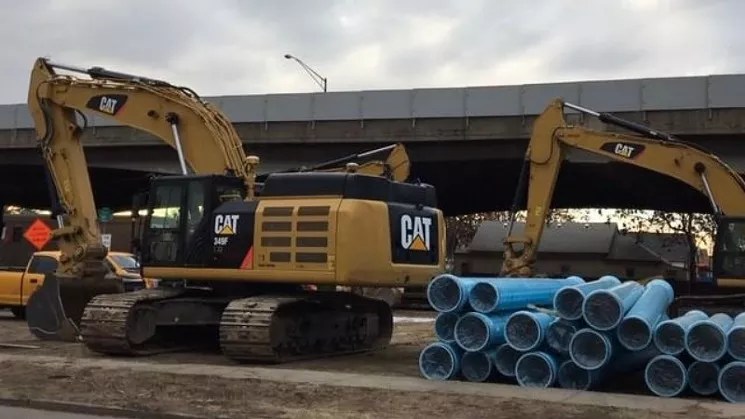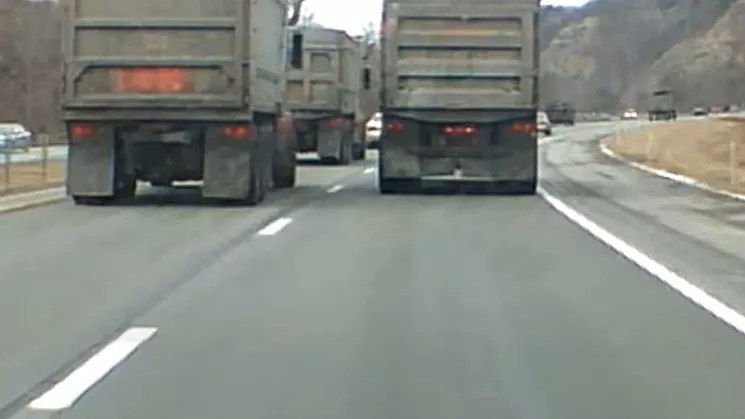
Naked King/iStock

Audio By Carbonatix
When Denver was recently named one of the best American cities for driving, one question immediately occurred to us: Are they out of their freaking minds?
A number of factors fueled our doubts. For one thing, the source of “USA’s Best Cities for Driving,” which ranked Denver as the sixth-best motoring city in the nation (behind Charlotte, Fort Worth, Chicago, Philadelphia and Columbus but ahead of New York City, Dallas, San Antonio and Houston in the top ten) is Insure My Rental Car, which isn’t exactly our go-to website for unimpeachable, rigorously researched analyses. For another, a report released by Bankrate in December 2018 deemed Colorado the eighth-worst state for driving – and last time we checked, Denver is actually located there.
But the most important reason for our reaction had to do with our experiences on the streets of the Mile High City, which have been bad for years and are only getting worse.
Why? Here are our top ten reasons, out of a possible one billion.
Number 1: Highway Construction
Major highways in the metro area are torn up just about everywhere you look. Take Interstate 70, where the controversial Central 70 project regularly results in lane shutdowns and shifts through construction zones and even full closures. Moreover, sections of the twelve-mile stretch in question are going to remain a mess until at least 2022 unless critics succeed in the tall task of killing the whole thing – and if that happens, two other highways (I-270 and I-76) would need renovating to handle the increased traffic.
From a commuter’s standpoint, that’s a lose-lose proposition, at least in the short run – if “short” can be used to describe something that would last years.
Construction is also happening along C-470, and in May 2018, we were told it was supposed to be finished this spring. Based on what it looks like right now, however, that’s a pipe dream.
The Colorado Department of Transportation tries to keep traffic flowing through areas under construction, particularly during rush hours, and much of the work is being done at night. But that hasn’t prevented gridlock from being a regular occurrence in these sections and on either side of them – and as a result, many of us are torn between measuring our commute times with a sundial or an hourglass.
Either of which would work all too well.

A February Colorado of Department of Transportation photo showing preparations for Central 70 project construction related to Colorado and Brighton boulevards.
Colorado Department of Transportation
Number 2: Surface Street Construction
Whoever makes orange street cones is making a mint in Denver. Turn any corner in the city and you’re likely to encounter at least one of them – and they’re typically accompanied by plenty of pals.
Some of the work gets done pretty quickly, including the repair of potholes, which the city pledges to fill within three business days of them being reported. But there are also many areas that are under siege from crews for weeks or months at a time.
For evidence, click on the construction map for north Denver. A recent visit revealed two temporary intersection closures, more than a dozen temporary bus stop closures and so many lane restrictions or road closures (some temporary, some permanent) that the graphic looks like an intricate maze with no exit.
Number 3: Dangerous Ramps
The transitions between Denver highways and surface streets can be a little slice of hell, even when they’ve been completely eliminated. Note that the permanent blockading of the York Street on-ramp to westbound I-70 (another gift from Central 70) has led to a slew of unexpected and unpleasant consequences for residents of RiNo and the Cole neighborhood.
Loads of working ramps bring risks of their own. In March 2017, a Denver Police Department list of the most dangerous intersections in the city was dominated by highway exits. Interstate 25 at Yale Avenue experienced twenty accidents between January 1 and March 5 of that year, and this total was only good enough for tenth on the roster. During the same period, Interstate 25 at Sixth Avenue bore witness to sixty crashes.
Think the situation’s gotten better since then? Doubt it.
Number 4: Traffic Volume
Construction slowdowns on highways and surface streets are exacerbated by the number of cars on the various roadways – and thanks to rapid growth in Denver, which reportedly added 100,000 people during a recent seven-year period, there seem to be more and more of them with every passing day.
As a result, routes where the speed limits could easily be reached or even succeeded not long ago are becoming veritable bogs, and spots that were previously troublesome can now be the equivalent of a still life, except with Fords and Toyotas rather than bowls of fruit.

When trucks try to pass other trucks on an incline, everyone loses.
YouTube file photo
Number 5: Slow Traffic That Won’t Always Keep Right
There are no shortage of Denver drivers who plant themselves in the fast lane and then refuse to go fast. Some of them are distracted by personal electronic devices or the beauty of the place they live, while a percentage are self-appointed highway guardians who apparently want to teach everyone else around them a speed-limit lesson.
Whatever their reasons for dragging anchor, though, such travelers are flat-out dangerous to themselves and others, since drivers who feel frustrated at being stuck behind them may make risky lane changes in a desperate attempt to put them in their rearview mirror forever. But even when this kind of behavior doesn’t precipitate crunching metal, it’s totally unacceptable, especially at a time when traffic is getting more and more congested.
Ever hear the phrase “Slower traffic keep right”? It’s a classic – and following it doesn’t hurt such fast-lane fools one bit. But they sure act like it does.
Number 6: Out of Sync
Of course, if the traffic signals on major routes are properly synchronized, drivers don’t have to mash their gas pedal into the floorboard to get from point A to point B in under a century – but that’s rare in Denver despite efforts by traffic engineers to prevent backups. And the time it takes for some traffic signals to cycle through can feel like several eternities. The one at Speer and Wewatta, near the Pepsi Center, has been timed at 150 seconds, or two and a half minutes.
No, we’re not kidding.
Number 7: Cyclists and Scooters
The interactions between cars and two-wheeled vehicles such as bicycles and scooters range from irritating to deadly – in 2018, Denver registered one of the highest traffic-death totals of the century – and there’s plenty of blame to go around.
Earlier this year, the Denver Streets Partnership issued a report card for 2018 in regard to Vision Zero, an action plan launched by Mayor Michael Hancock that aims to eliminate traffic deaths in the Mile High City by 2030. The city earned an overall grade of “C,” with gains related to added bike lanes and reconfigured intersections more than offset by shortfalls when it came to traffic calming, sidewalk installation, enhanced lighting, the redesign of pedestrian crossings and so on.
Bike advocates complain that the city hasn’t done enough to make cycling safe, and new rules for scooters haven’t ended those moments when cars must screech to a halt in order to avoid turning a joy rider into a stain on the pavement.

Is this what the bomb cyclone looked like to you?
Number 8: Rapid Weather Changes
March 13’s bomb cyclone perfectly symbolized the ways in which conditions in Denver can go from benign to bizarre with the snap of a finger. That morning, warnings about a monster storm seemed completely absurd. Then the wind whipped up, and within a matter of minutes, snow was being hurled sideways, covering cars with sickening splats.
Even longtime Denver residents had difficulty dealing with the meteorological craziness. So you can guess how lots of recent arrivals managed.
Number 9: Transplants
It’s not fair to generalize about the driving skills of folks who’ve moved to Denver from other parts of the country. Some of them lived in places that get their share of inclement weather and they’re able to react appropriately. But thousands upon thousands of others seem to respond to the sight of snow or even rain with either molar-clenching panic that causes them to drive far more slowly than necessary or a blithe disregard for slick stuff that turns them into rolling threats to the health and welfare of everyone around them.
And unfortunately, they’re seldom in Geo Metros.
Number 10: SUVs
Sport-utility vehicles are Denver favorites whether their owners are into off-roading or not. But far too often, SUV drivers, as well as pilots of souped-up passenger trucks, seem to believe the laws of physics don’t apply to them.
Put a Denver newcomer into one of these rides on a wet or icy road and you’ve got a formula for disaster. But folks who’ve lived in the Mile High City for years aren’t immune from this delusion. We’ve all had the experience of bracing for impact as an SUV careens down the highway looking as if the only way it will stop is if it collides with something larger and more stationary. Usually the worst doesn’t happen. But sometimes it does.